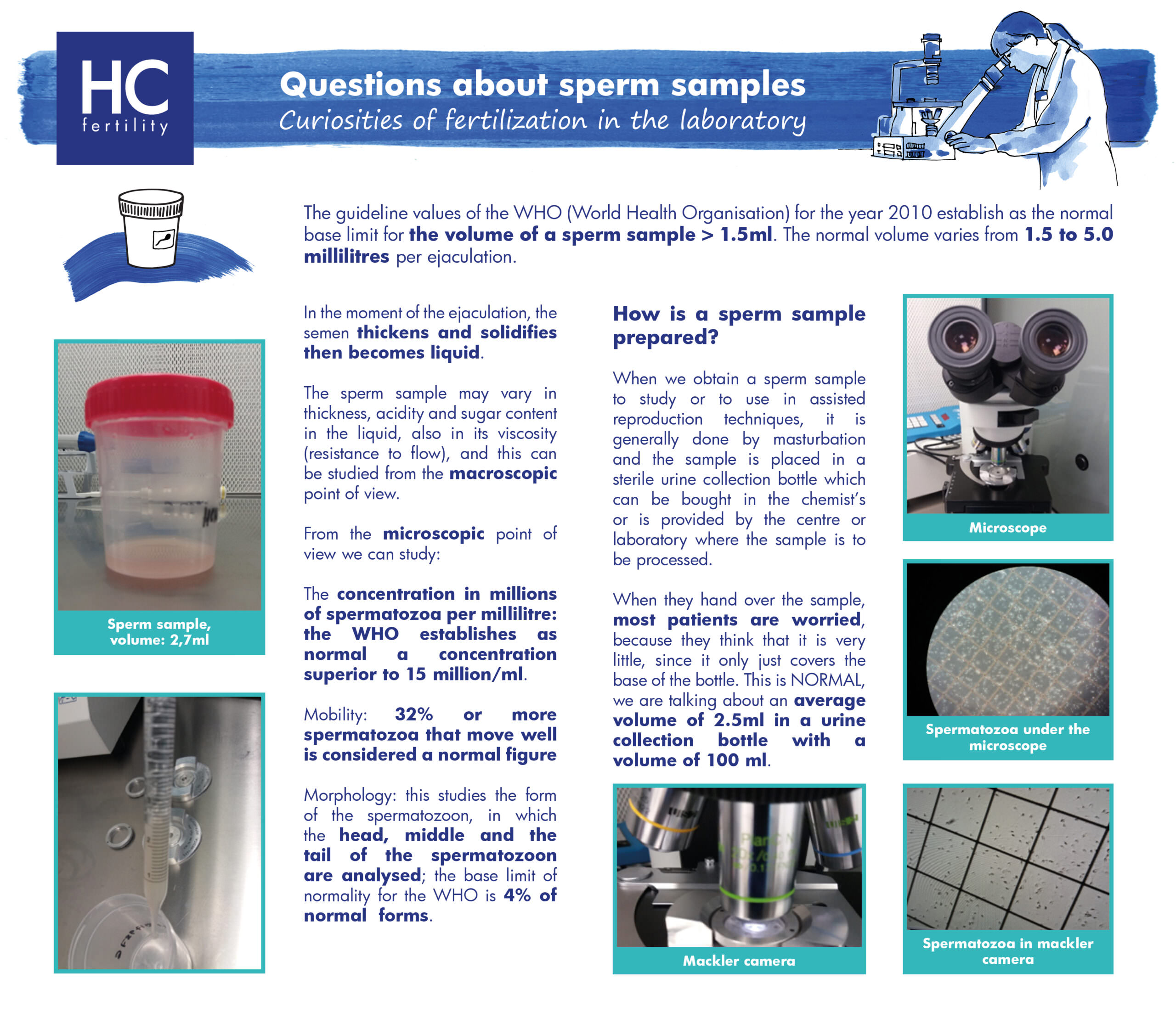21 November, 2019
Sperm samples: Curiosities of Fertilization in the Laboratory

The guideline values of the WHO (World Health Organisation) for the year 2010 establish as the normal base limit for the volume of a sperm sample > 1.5ml.

The normal volume varies from 1.5 to 5.0 millilitres per ejaculation.
In the moment of the ejaculation, the semen thickens and solidifies then becomes liquid.
The sperm sample may vary in thickness, acidity and sugar content in the liquid, also in its viscosity (resistance to flow), and this can be studied from the macroscopic point of view.
From the microscopic point of view we can study:
The concentration in millions of spermatozoa per millilitre: the WHO establishes as normal a concentration superior to 15 million/ml.
Mobility: 32% or more spermatozoa that move well is considered a normal figure.
Morphology: this studies the form of the spermatozoon, in which the head, middle and the tail of the spermatozoon are analysed; the base limit of normality for the WHO is 4% of normal forms.
How is a sperm sample prepared?

When we obtain a sperm sample to study or to use in assisted reproduction techniques, it is generally done by masturbation and the sample is placed in a sterile urine collection bottle which can be bought in the chemist’s or is provided by the centre or laboratory where the sample is to be processed.
When they hand over the sample, most patients are worried, because they think that it is very little, since it only just covers the base of the bottle. This is NORMAL, we are talking about an average volume of 2.5ml in a urine collection bottle with a volume of 100 ml.

Back to blog
In other news

15 November, 2019
Eggs: Curiosities of fertilization in the Laboratory
The eggs retrieved through follicular puncture are kept in incubators in the IVF laboratory where th...
[Continue reading ]31 October, 2017
Compatibility Testing or Genetic matching
The tranquility of leaving the best inheritance possible: HEALTH. ...
[Continue reading ]


